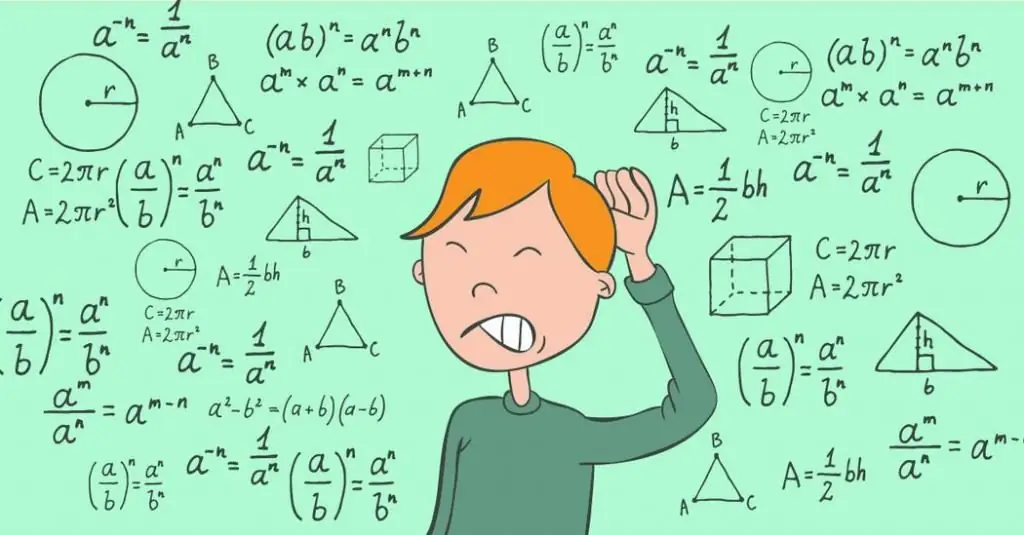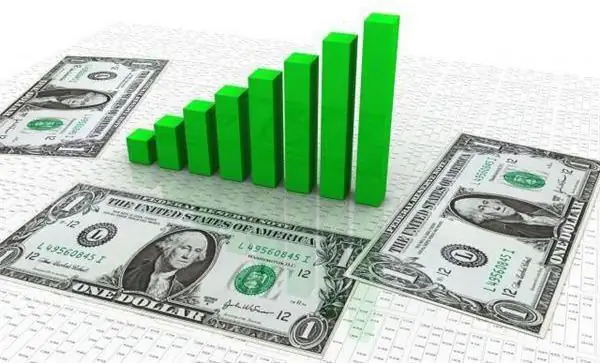2026 Author: Howard Calhoun | [email protected]. Last modified: 2025-06-01 07:12:56
Depreciation in accounting is a process of transferring the cost of fixed assets and intangible assets in parts to the price of products (works performed, services provided) as they become obsolete and physically depreciated. Fees can be calculated in different ways. They are defined in RAS 6/01.
Terminology
Depreciation is the deduction of a part of the cost of fixed assets to compensate for the depreciation of objects. They are included in the costs of distribution or production. Deductions are made on the basis of established norms, as well as the book value of funds, which, in fact, are depreciated. The norm is called the annual% compensation of the price of the worn out part of the fixed assets.

Methods
In accordance with domestic accounting standards, 4 calculation options are provided:
- Linear way. It assumes a uniform distribution of the amount from the initial to the final cost (at the end of the operational life) throughout the entire period of the OS. The current residual value is determined by subtracting the total accumulateddepreciation of property from the original.
- Write-off of cost in proportion to the volume of products released (services rendered, work performed). The calculation is carried out on the basis of a natural indicator (for example, machine hours of equipment operation).
- Decreasing balance method. The amount for each period is equal to the final cost multiplied by a certain percentage. Depreciation is charged annually at the beginning of the period.
- Cost write-off based on the sum of the number of years of service life.

In accordance with the law, enterprises can independently choose the method of accounting for depreciation. The simplest is the linear method. However, for many organizations, the decreasing balance method is more beneficial. It refers to non-linear accounting methods. Let’s take a closer look at what a diminishing balance method is. An example of applying this method will also be described in the article.
Description
With the non-linear method, the repayment of the value of property is uneven throughout the entire operational period. Declining balance depreciation involves the application of an acceleration factor. The enterprise can set it within 1-2.5. At the same time, for leased property, the coefficient can be tripled. In practice, this means that the company reimburses most of the costs for the purchase of objects while they are still relatively new.
Expediency
In what cases are such depreciation charges beneficial? Reduced methodthe remainder is most appropriate when facilities annually lose significantly in their productivity. Having worked out a certain resource, the property requires more and more expenses for maintenance and repair. Its effectiveness is significantly reduced, despite the fact that the service life has not yet formally expired.

In other words, the benefits of exploiting such property are beginning to diminish. It is in the interests of the owner to write off for acquisition as soon as possible. So he will have the opportunity to renew the OS from the depreciation fund.
Exceptions
It should be said that the method of declining depreciation balance is not applicable in all cases. Not suitable for this method:
- Unique equipment for certain types of industries.
- Objects with a useful life of less than 3 years. These include machinery and equipment from 1-3 depreciation groups.
- Cars. The exception is official cars and taxis.
- Office decor.
- Buildings and some other objects classified in groups 8-10 by useful life.
Calculation features
The calculation is based on the residual value of the property. It is equal to the initial costs of its purchase and commissioning, from which the repaid amounts at the beginning of the period are deducted. Another indicator that will be required in the calculation is the depreciation rate. It is determined by the period of useful operation. The wear factor is defined as100%/n. Here n is the service life in months or years (depending on the time period for which the calculation is made). The third indicator that is used in the formula is the acceleration factor. It is set by the enterprise independently and fixed in the financial policy.

The reducing balance method thus assumes the following equation:
A=Co(KKu) / 100, in which:
- withdrawal amount - A;
- residual quality - Co;
- wear rate - K;
- acceleration factor - Ku.
Practical application
Let's consider how the decreasing balance method works. The initial data is as follows:
- 50 thousand rubles - the amount for the purchase of OS;
- 5 years useful life;
- acceleration factor - 2.
Calculation can be done in two ways. In the first case, the period of service is translated into months at once. In the second, the annual amount is calculated, and then divided by 12. Both numbers will be needed for the calculation. The fact is that depreciation is carried out every month, and to determine the residual value, an annual amount is needed. First of all, the rate is calculated. It is 20%/year (100%/5 years) or 1.67%/month. (100%/60 or 20%/12). Taking into account Ku=2, the depreciation rate per year is 40%, and per month - 3.34%.

Using the decreasing balance method, the calculation can be made for every 12months separately:
- In the first year, the desired cost is equal to the original. Write-off amount: 50 thousand rubles x 40/100 \u003d 20,000 or 1670 r / month.
- In the second year, accrual begins with the determination of the residual value. It will be 50,000 - 20,000=30,000 rubles. Further, using the formula, we get: 30,000 x 40/100=120,000 or 1,000 r/month.
- For the third year, the calculation is carried out in a similar way. The result is 7200 r/year or 600 r/month.
- As of January of the next (fourth) year, the balance of initial expenses for the purchase of fixed assets is 10,800 rubles. Substituting the values into the formula, we get the amount of 4320 r/year or 360 r/month.
- At the beginning of the last year, the cost is 10800 - 4320=6480 rubles. The resulting figure is 13% of the fixed assets price taken into account when the object was placed on the balance sheet. At this stage of the calculation, you should refer to the tax rules. In accordance with Article 259 of the Tax Code, at the time the book value reaches 20% of the initial value, the calculation method changes. In order to maintain a monthly schedule for repayment of deductions and write off the incurred costs of property in full, the balance should be distributed over the number of months until the end of operation. So 6480 is divided into 12 months. The result is the amount of depreciation per month for the last year of operation - 540 rubles.

Conclusion
Throughout the entire operational period, the book value of the property is reduced by the depreciation amount. This will continue until shereaches zero. Here it is necessary to note one important point: if the enterprise chooses the reducing balance method, it should be applied throughout the entire operational period. It is valid from the date of capitalization until the completion of the depreciation calculation. The basis for terminating the accrual of depreciation is the full repayment of the price of the property or its removal from the balance sheet. It should not be forgotten that the method chosen by the enterprise must be fixed in the financial policy.
Recommended:
Hoskold method, Ring method, Inwood method - ways to recover investment capital

When a person invests his own money in an income-generating object, he expects not only to receive profit from the invested capital, but also to fully repay it. This can be done through resale or by obtaining such profits that not only bring interest, but also gradually return investments
Resource budgeting method: description, features and example

The planned cost for the performance of any work is included in the estimates. Incorrectly drawn up, from a legal point of view, the document will not be accepted for consideration. If economic errors are made, the actual cost of the object will be very different from the estimated one. What methods are used to calculate the cost of work?
Formula of net assets on the balance sheet. How to calculate net assets on a balance sheet: formula. Calculation of net assets of LLC: formula

Net assets are one of the key indicators of the financial and economic efficiency of a commercial firm. How is this calculation carried out?
Wage fund: calculation formula. Wage fund: formula for calculating the balance sheet, example

As part of this article, we will consider the basics of calculating the wage fund, which includes a variety of payments in favor of company employees
Decreasing depreciation balance method: example, calculation formula, pros and cons

Depreciation charges are one of the most important accounting processes in an enterprise. Depreciation, one way or another, is charged by all enterprises, regardless of the taxation system that they use

